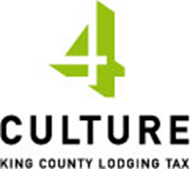No. 3 | March 6, 2019
Eastside Stories
Meydenbauer Bay
Subscribe to Eastside Stories by emailing us at: info@eastsideheritagecenter.org
Eastside Stories is our way of sharing Eastside history through the many events, people places and interesting bits of information that we collect at the Eastside Heritage Center. We hope you enjoy these stories and share them with friends and family.
On March 16, 2019, dignitaries will cut the ribbon on Bellevue’s newest gathering place, the long awaited Meydenbauer Bay Park. This park ties together the old Meydenbauer Beach park with the Bellevue Marina, creating the longest stretch of public waterfront in the city.
Meydenbauer Bay is the birthplace of Bellevue and served as the connection point between the earliest settlers and Seattle. Bellevue’s first commercial district on Main Street was just up the hill, as was Bellevue’s first major school building.
In March of 1869, William Meydenbauer, a German-immigrant baker, rowed across Lake Washington and staked his claim to land on the east end of the bay that would later bear his name.
View from 1908, looking north across the early passenger ferry wharf to the Bellevue School on the hill--at the corner of Main and 100th Avenue today.
At the time there were no other permanent settlers in the area, and Meydenbauer had no intention of building a permanent residence himself. His cabin was just enough to “prove” his homestead and gain him title to the land. He sold all his holdings before long and later acquired property on Hunts Point.
Families gradually settled the area around the bay. By the 1880s the new steamers on the lake began to call, and a wharf was built at the head of the bay.
The big change came in 1913, when the new vehicle ferry, the Leschi, arrived in Meydenbauer Bay. Although the Leschi would cut the Meydenbauer stop off its itinerary in 1920 (sticking to a Seattle-Medina route) that service was enough to establish Bellevue as the primary settlement in the area.
The wharf shown in the first photo was lengthened to accommodate the new car ferry Leschi in 1913. Regular ferry service to Meydenbauer Bay ended in 1920, but excursions to the bay continued into the 1930s. (L85.39.4)
Meydenbauer Bay was also an early destination for revelers from Seattle. In the early 1900s, part of William Meydenbauer’s original homestead was purchased and turned into Wildwood Park, which included a dance hall. Steamers would bring party-goers from Seattle for picnics, dancing and canoe paddling. Wildwood had its ups and downs, hosting roller skating and boxing matches. The dance hall was eventually remodeled into the Meydenbauer Bay Yacht Club, which stands today among Bellevue’s oldest structures.
Perhaps the most curious part of Meydenbauer Bay’s history came in 1919, shortly after the opening of the Lake Washington Ship Canal: the American Pacific Whaling Company. Although alternatives had been developed for most of the products that came from whales, the industry was still active in Alaskan waters.
The American Pacific Whaling fleet gets up steam in preparation for their departure to Alaskan waters. The promoters of the Lake Washington Ship Canal envisioned it giving rise to major industries on Lake Washington. While industry lined the canal and Lake Union in Seattle, the whaling station at Meydenbauer Bay was one of the few significant industrial concerns to locate on the lake itself.
The fleet of nine boats operated in Alaska during the summer months (no whales were ever brought to Lake Washington). Things were generally pretty quiet during the winter in Meydenbauer, with the mostly Scandinavian whalers living in Ballard. Nonetheless, the American Pacific Whaling Company was the second largest employer on the Eastside at the time, with only the Houghton shipyard having more workers.
Like much of the Alaska fishing fleet, the whalers preferred to be in Puget Sound during the off-season, and the new ship canal offered the bonus opportunity of keeping the vessels in fresh water.
After World War II it became clear that whaling did not have a future as an industry, and the Lagen family closed the business. The dock area was converted to what is now the Bellevue Marina, and two original buildings remain on the site.
The Bay gradually filled in with waterfront homes, leaving few publicly-accessible places. The original Clyde ferry landing at the foot of 92nd Avenue became Clyde Beach, which was later expanded by purchasing the property to the east. In the 1930s a Works Progress Administration (WPA) project converted the ravine between 97th and 98th avenues into Meydenbauer Beach Park, which forms the western boundary of the new park.
With the new, expanded Meydenbauer Bay Park, the Eastside can return to its roots along this beautiful natural inlet.
The Eastside Heritage Center will participate in the Grand Opening of Meydenbauer Bay Park, Saturday, March 16, from 11:00 a.m. to 2:00 p.m.
Our Mission To steward Eastside history by actively collecting, preserving, and interpreting documents and artifacts, and by promoting public involvement in and appreciation of this heritage through educational programming and community outreach.
Our Vision To be the leading organization that enhances community identity through the preservation and stewardship of the Eastside’s history.
Eastside Heritage Center is supported by 4 Culture







